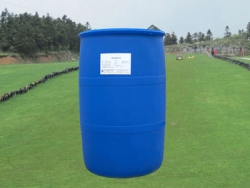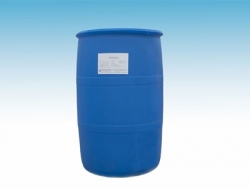Alkyl polyglycosides have extremely high surface activity, good detergency and biodegradability, and are extremely irritating to the skin and mucous membranes, low toxicity, good compatibility with other surfactants and strong broad-spectrum antibacterial It has a lot of uses in the fields of detergent, cosmetics, food, and biochemistry.

Alkyl polyglycosides are one of the green surfactants and their performance is extremely excellent. Small stimulation to the human body. It is prepared from natural products and is biodegradable. In recent years, with the increasing environmental protection concepts and the shortage of petroleum resources, new green environmentally-friendly surfactants researched and developed using natural products are increasingly valued by researchers. Although the research work on alkyl glycosides in China started late, many gratifying results have been achieved in recent years. It is foreseeable that under the unremitting efforts of more and more researchers. Further progress will be made in the synthesis and application of alkyl glycosides.

The basic raw materials for the production of alkyl polyglycosides are starch and fat, both of which are renewable resources for the processing of natural products. And China's starch resources are very rich. As the detergent industry moves toward a green and natural direction, alkyl glycosides will receive further attention, and the development of alkyl glycoside surfactants has great commercial potential. Accelerating the research and development of alkyl polyglycosides will strongly promote the development of China's detergent industry and surfactant industry.
There are many other synthetic methods for alkyl glycosides. For example, Koenigs-Knorr reaction synthesis method, orthoester method. The ketal alcoholysis method and the enzyme catalysis method of sugar. These synthetic methods are the most energetic by enzyme catalysis, and attract the attention of many researchers at home and abroad. The method of producing glycosides by this method has good selectivity, mild reaction conditions, high yield and high product purity, but the preparation of enzymes has been plagued by researchers. It is still to be further studied as industrial production. Research on this aspect was carried out earlier in foreign countries. There are also more related reports.

Enzyme catalysis is generally divided into free enzyme catalysis and immobilized enzyme catalysis [10]. For example, Quanyi [12] used a method of forming microcapsules by interphase crosslinking reaction to immobilize glycosidase, and catalyzed the synthesis of alkyl glycosides by this immobilized enzyme. The enzyme and glucose were simultaneously embedded in the microcapsules, and the reaction was simplified to an organic two-phase system. The results showed that the reaction rate between hexanol, octanol and dodecanol and glucose decreased with chain length. Repeated use of microcapsules showed that the service life was more than double that of the enzyme embedded in the adsorption method [l2].